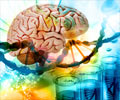American researchers working on Hypoplastic Left Heart Syndrome (HLHS), a severe cardiovascular malformation that is difficult to treat and is often fatal, have found that the condition is caused primarily by genetic factors.
The researchers found that the malformation has high heritability, suggesting that families with a child with HLHS carry a significant recurrence risk.“Our study demonstrates that HLHS has high heritability, suggesting it is caused almost entirely by genetic effects instead of environmental factors, and that families with a child with HLHS carry a significant recurrence risk of HLHS or related heart defects. This should be considered by physicians when counselling parents to ensure they are aware of potential risks,” said the lead author of the study, Robert B. Hinton, Jr., M.D., a physician.
The study conducted at Cincinnati Children’s Hospital Medical Center included 38 family-based test groups with a history of HLHS.
The authors of the study found that 55 percent of those families had one or more blood relative with HLHS or an associated heart defect. Of 193 blood relatives evaluated between the ages of 3 days and 74 years, 21.4 percent had HLHS or associated heart defects.
In families where one child already had HLHS, the risk of HLHS recurring in a sibling was 8 percent while the risk of a sibling having an HLHS-associated cardiovascular defect was 22 percent. In families where a child and one parent had HLHS, the recurrence risk increased dramatically to 21 percent for recurring HLHS and 25 percent for an associated defect. All participants were evaluated using echocardiography to determine specific phenotype, or the visible heart characteristics and defects found among the different family test groups. During those examinations researchers diagnosed 12 new cases of associated defects among relatives of HLHS patients.
The authors of the study suggested further studies to pinpoint specific genes responsible for the condition.
Advertisement
Children with HLHS suffer from restricted blood and oxygen flow because their hearts are abnormally shaped with an underdeveloped left side. This can include an undersized and/or malformed left ventricle (the heart’s primary pumping chamber), aorta, aortic valve or mitral valve.
Advertisement
He said that babies can survive HLHS by undergoing a series of three complex operations after birth or receiving a heart transplant.
D. Woodrow Benson, M.D., Ph.D., director of Cardiovascular Genetics at Cincinnati Children’s and the study’s senior author said that finding the genetic basis of HLHS could have significant implications for treating children with the disease.
“Once we know what genes are involved we can study how the disease developments, which may lead to new treatment approaches,” he added.
Earlier studies in animals indicate HLHS may develop because of embryonic alterations in blood flow, such as a premature narrowing of the aortic valve and foramen ovale (which in the fetal heart allows blood to enter the left atrium from the right).
Other studies have pointed to the role of certain genes (TBX5 and IRX1) in the formation of defective heart chambers with distinct shapes, functionality and molecular structure. Based on analysis of how these genes function, scientists postulate that HLHS may result from a primary defect in the growth of muscle tissue during the heart’s development.
“Currently there are no experimental models to clarify the relative contributions of these two hypotheses to the development of HLHS,” Dr. Hinton said.
“An important step forward in this research will be to understand the degree to which these hypothetical causes actually contribute to the condition,” he added.
The new study will be published in the Oct. 16 issue of the Journal of the American College of Cardiology.
Source-ANI
GAN /J








